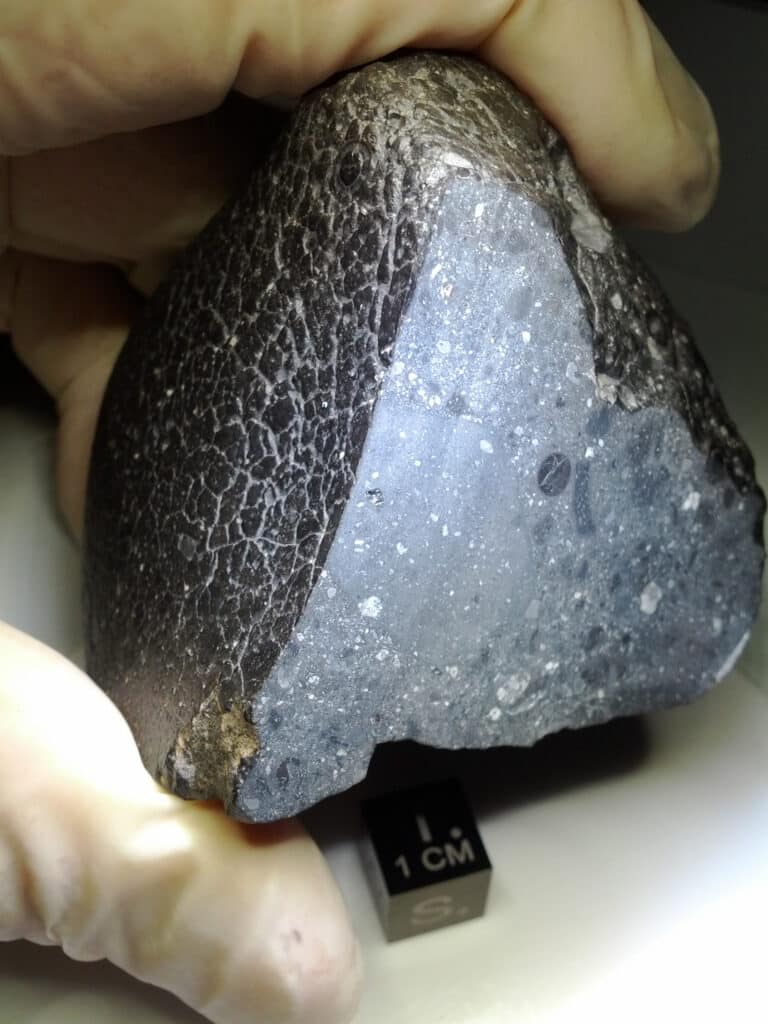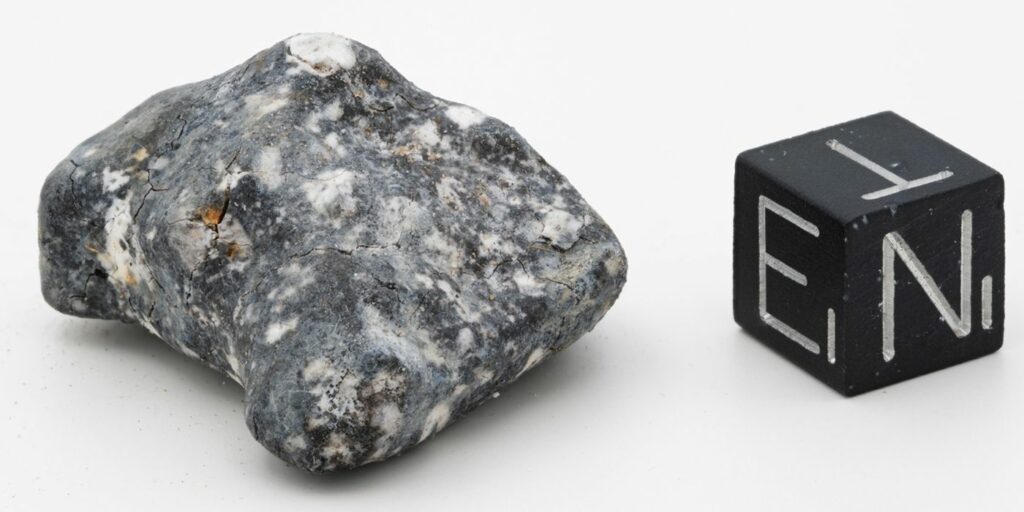A rare group of meteorites were discovered near Berlin, Germany, last month. Hailed as an extraordinary celestial event, these “aubrites” have sparked significant excitement within the scientific community, offering a unique glimpse into the materials that make up our solar system.
A team of international astronomers embarked on a meticulous search in the fields south of Ribbeck after the meteorites fell to Earth, guided by precise predictions from experts at the Astronomical Institute of the Czech Academy of Sciences. Their mission was to locate these elusive space rocks, a task made challenging by the meteorites’ earthly camouflage.
“They were devilishly difficult to find because, from a distance, they look like other rocks on Earth,” says Dr. Peter Jenniskens, a meteor astronomer at SETI Institute, in a media release. “Close up, not so much.”

The search teams initially struggled to identify the meteorites on the ground due to their unusual characteristics. Unlike typical meteorites that display a black glass crust formed by atmospheric heating, aubrites have a mostly translucent glass crust, making them harder to distinguish from ordinary Earth rocks. The breakthrough came when a Polish team of meteorite hunters found the first specimen, enabling Jenniskens’ team to quickly locate additional pieces.
These meteorites are fragments of the small asteroid 2024 BX1, first detected by Dr. Krisztián Sárneczky at the Konkoly Observatory in Hungary. Predicted to impact Earth by NASA’s Scout and ESA’s Meerkat Asteroid Guard systems, the asteroid’s descent resulted in a bright fireball, captured by observers and marking Jenniskens’ fourth guided recovery of a small asteroid impact.
Initial examinations of the meteorites conducted with an electron beam microprobe confirmed their classification as achondrites of the aubrite type, characterized by their unique mineralogy and chemical composition. This discovery was submitted to the International Nomenclature Commission of the Meteoritical Society for official recognition.
What are Aubrites?
Aubrites, named after a meteorite that fell in the village of Aubrés, France, in 1836, are known for their distinct gray granite-like appearance, primarily composed of magnesium silicates such as enstatite and forsterite. These meteorites contain minimal iron, and their glassy crust significantly differs from that of most other meteorites, making them particularly challenging to identify in the field.
“Aubrites do not look like what people generally imagine meteorites to look like. Aubrites look more like a gray granite and consist mainly of the magnesium silicates enstatite and forsterite,” explains Christopher Hamann from the Museum für Naturkunde, who was involved in the initial classification and took part in the search.

The discovery of these aubrite meteorites near Berlin is not just a scientific achievement; it underscores the importance of meteorite collections in research and adds valuable specimens to the limited number of observed aubrite falls worldwide.
“This underlines the immense importance of collections for research. So far, there is only material from eleven other observed falls of this type in meteorite collections worldwide,” concludes Dr. Ansgar Greshake, the scientific head of the MfN’s meteorite collection.













Comments